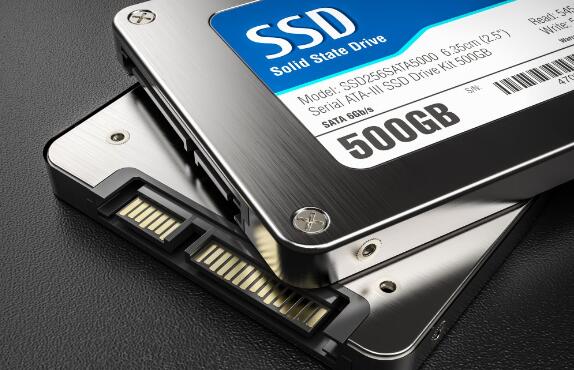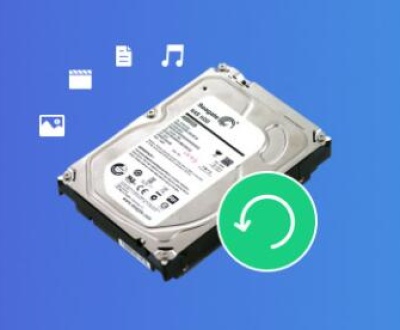Solid State Drives (SSDs) have become a popular choice for storage due to their speed, reliability, and efficiency compared to traditional Hard Disk Drives (HDDs). However, one common question is whether SSDs slow down as they become full. The answer is yes, they can slow down when they approach capacity, and this slowdown can be attributed to several factors related to how SSDs manage and store data.
SSD Technology
To understand why SSDs slow down when full, it’s essential to grasp the basics of how SSDs work. Unlike HDDs, which use spinning platters to read and write data, SSDs use NAND flash memory cells. These cells are organized into pages and blocks. Typically, a page is the smallest unit of storage, usually 4 KB in size, while a block contains multiple pages, commonly 128 or 256 pages.
How Data is Written and Managed in SSDs
When data is written to an SSD, it is stored in these pages. However, data can only be written to an empty page; if a page contains old data, that data must be erased before new data can be written. This is where SSDs differ significantly from HDDs. While HDDs can overwrite old data directly, SSDs must go through a process called “garbage collection” to erase old data and prepare blocks for new data writes.

Garbage Collection and TRIM
Garbage collection is a crucial function of SSDs that helps manage and clean up data. When files are deleted on an SSD, the data is not immediately erased; instead, it’s marked as invalid. The SSD will later consolidate and erase these invalid pages during the garbage collection process.
TRIM is another critical feature that works in tandem with garbage collection. When a file is deleted, the operating system sends a TRIM command to the SSD, informing it which blocks of data are no longer in use and can be wiped clean. This helps the SSD efficiently manage space and avoid unnecessary data writes.
Why SSDs Slow Down When Full
As an SSD fills up, several factors contribute to the slowdown:
Reduced Free Space and Increased Garbage Collection:
When an SSD has plenty of free space, it can easily write new data to empty pages without the need for extensive garbage collection. However, as the drive fills up, fewer empty pages are available, and the SSD has to perform more garbage collection to free up space. This process involves reading data from partially filled blocks, moving valid data to new blocks, and erasing the old blocks. This additional overhead increases write latency and slows down the overall performance of the SSD.
Write Amplification:
Write amplification is a phenomenon where the amount of data physically written to the NAND flash exceeds the amount of data intended to be written. When an SSD is nearly full, write amplification increases due to the need to move and consolidate data during garbage collection. This results in more data being written to the flash memory than the user originally requested, leading to reduced performance and increased wear on the NAND cells.
Wear Leveling:
SSDs use wear leveling algorithms to distribute data writes evenly across all NAND cells to prevent any single cell from wearing out prematurely. As the SSD fills up, the wear leveling process becomes more complex and time-consuming because there are fewer available blocks to distribute the writes. This can lead to increased write amplification and reduced performance.
Over-Provisioning:
Many SSDs come with a portion of their capacity reserved for over-provisioning. This reserved space is not accessible to the user and is used by the SSD’s controller for garbage collection, wear leveling, and managing bad blocks. Over-provisioning helps maintain performance as the drive fills up by providing extra space for these operations. However, if the user fills up the SSD close to its total capacity, the benefits of over-provisioning diminish, leading to a noticeable slowdown.
Fragmentation:
Although SSDs are less susceptible to fragmentation than HDDs, it can still occur. Fragmentation happens when data is written, deleted, and rewritten over time, causing related data to be spread across different blocks. When an SSD is nearly full, fragmentation can become more pronounced, leading to increased garbage collection and reduced performance.
Real-World Impacts of SSD Slowdown
The extent of the slowdown experienced on a full SSD can vary depending on several factors, including the specific SSD model, its controller, NAND type, and the workload being performed. In general, write operations are more affected by reduced free space than read operations. Users may notice slower file transfers, longer application load times, and decreased system responsiveness when their SSD is close to full capacity.
It’s also worth noting that different types of NAND flash memory (e.g., SLC, MLC, TLC, QLC) have different performance characteristics and endurance levels. SSDs using TLC (Triple-Level Cell) or QLC (Quad-Level Cell) NAND, which store more bits per cell, are more likely to experience significant slowdowns when nearing full capacity compared to SLC (Single-Level Cell) or MLC (Multi-Level Cell) NAND-based SSDs.
Mitigating SSD Slowdown
While it’s inevitable that an SSD will slow down as it fills up, there are several strategies users can employ to mitigate this slowdown:
Leave Free Space:
One of the simplest and most effective ways to prevent SSD slowdown is to avoid filling the drive to its maximum capacity. By leaving 10-20% of the drive’s capacity free, users can ensure that the SSD has enough space to perform garbage collection, wear leveling, and other maintenance tasks efficiently.
Enable TRIM:
Ensure that the TRIM function is enabled on the operating system. TRIM helps the SSD manage space more efficiently by informing it which blocks are no longer in use and can be wiped clean, reducing the workload during garbage collection.
Use Over-Provisioning:
Some SSDs allow users to manually adjust the amount of over-provisioning by reducing the drive’s accessible capacity. By increasing the over-provisioning space, users can improve the SSD’s performance and longevity, especially when the drive is nearly full.
Upgrade to a Larger SSD:
If possible, upgrading to a larger capacity SSD can provide more free space, reducing the likelihood of performance degradation. A larger SSD also typically has more NAND cells, which can distribute wear more evenly and reduce write amplification.
Regularly Update Firmware:
SSD manufacturers often release firmware updates that can improve performance, enhance garbage collection algorithms, and optimize wear leveling. Regularly updating the SSD’s firmware can help maintain its performance over time.
Use SSD Optimization Tools:
Some SSD manufacturers offer software tools designed to optimize the performance of their drives. These tools can perform tasks such as manual garbage collection, firmware updates, and health monitoring, helping to keep the SSD running smoothly even when it is nearly full.
Monitor SSD Health:
Keeping an eye on the SSD’s health using monitoring tools can provide insights into its performance and endurance. If the drive’s health is declining or it is consistently near full capacity, it may be time to consider replacing the SSD or offloading some data to another storage device.
About us and this blog
Panda Assistant is built on the latest data recovery algorithms, ensuring that no file is too damaged, too lost, or too corrupted to be recovered.
Request a free quote
We believe that data recovery shouldn’t be a daunting task. That’s why we’ve designed Panda Assistant to be as easy to use as it is powerful. With a few clicks, you can initiate a scan, preview recoverable files, and restore your data all within a matter of minutes.
Subscribe to our newsletter!
More from our blog
See all postsRecent Posts
- How to save tiktok videos on computer 2025-04-30
- How to watch gopro videos on computer 2025-04-30
- How to save video from blink video doorbell to computer? 2025-04-30

 Try lt Free
Try lt Free Recovery success rate of up to
Recovery success rate of up to









